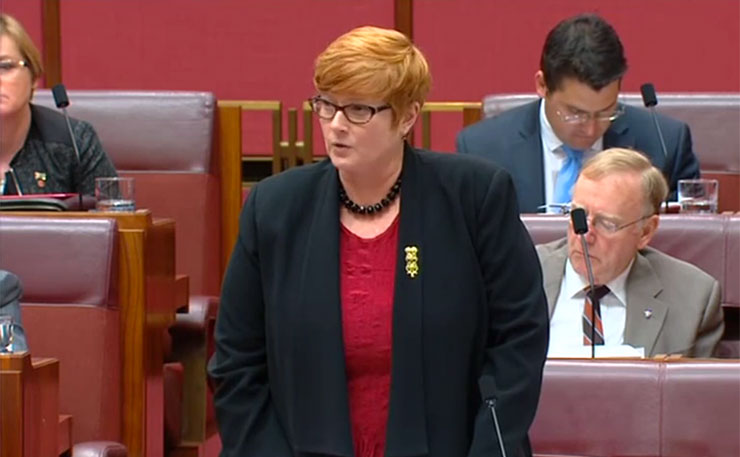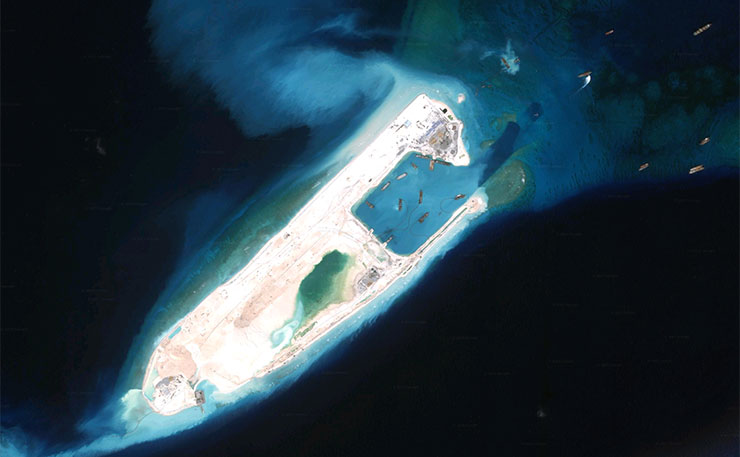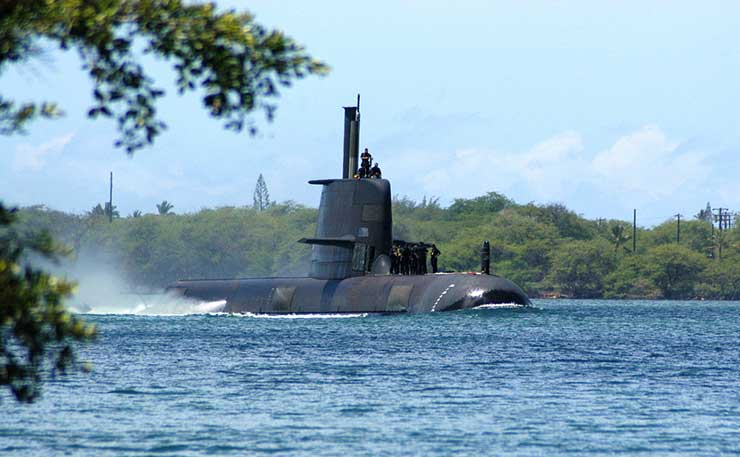Australia’s new submarine deal takes our defence spending to record levels or both expenditure and silliness, writes Richard Hil.
Australians can now rest easy now that our sovereign borders and seaways are in safe hands, thanks to the deal struck with state-owned French submarine contractor, DCNS Group (a major corporation that supplies over 50 navies, including those in the Persian-Arabian Gulf states, with weapon, control and design “defence” systems).
Announcing the $50 billion deal (which is more than the budget allocated for the NBN), Prime Minister Malcolm Turnbull last week told the assembled press in Adelaide (where the fleet of 12 conventionally powered subs will be built) that, “we do this to secure Australia, to secure our island nation. But we do it also to ensure that our economy transitions to the economy of the 21st century”.
Leaving aside the fact that the first replacement for the outdated Collins-class submarine will be launched as late as 2030 (and promptly rendered obsolete through the development of Chinese-made underwater drones), the new DCNS Shortfin Barracudas’ are necessary, insists Defence Minister Marise Payne, because, “we are a maritime-based trading nation and both our national and economic security are linked to the maritime environment of our region”.
Impressive though these tubular warships are – speedier, quieter and capable of traveling longer distances than their predecessors – the obvious question arises: who is preventing or indeed threatening to prevent Australian commercial or naval ships from traversing the region’s waters? Indonesian or Vietnamese pirates perhaps, or naval vessels from Taiwan, Cambodia, North Korea? Or could it be the latest bogey-man: China?
It was noticeable that neither Turnbull nor Payne paid much attention to our links with the US or the supposed threat posed by China, particularly in the South China Sea. This is surprising given that most military experts regard the navy’s role as critical to the “strategic interests” of the US and its allies as they “grapple with” rising Chinese military and naval power.

Earlier this year, US Vice Admiral Joseph Aucoin, Commander of the Japan-based 7th Fleet, urged Australia to carry out naval patrols near to the disputed waters in the South China Sea. He went further, urging deployment within 12 nautical miles of the claimed Chinese territory.
With over two-thirds of our commercial vessels passing through the disputed waters, it’s clear that this area is of particular “strategic” interest to the Australian government. Officially the Turnbull government has pulled back from any potential incursions into the 12-mile exclusion zone around the disputed territory, although Minister Payne confirmed that: “As Vice-Admiral Joseph Aucoin said, freedom of navigation exercises are a matter for each individual country.”
But is the role of Australia’s submarine fleet as benign as we are led to believe? On its website, the Royal Australian Navy makes it clear that submarines do more than simply patrol troubled waters. In addition to intelligence gathering and surveillance, functions include: “maritime strike and interdiction [prohibition]”, “barrier operations”, “advanced force operations”, “layered defence”, “interdiction of shipping”; “containment by distraction”; and “support to operations on land”.
These expansive (yet ill-defined) roles are confirmed by the Submarine Institute of Australia, an influential research organisation comprised mainly of former naval officers and submarine engineers, which asserts that Australian submarines are deployed, among other things, to “threaten and, if necessary, launch precise attacks on selected maritime and land targets without exposing our intentions, the positioning of our launch platform or laying that platform open to immediate retaliation”.

In the combustive context of the South China Sea such offensive posturing should raise concerns and suggest that clarity is needed in respect of current and future submarine fleet deployment. Equally concerning is the government’s view that expenditure on a new generation of submarines is integral to the “economy of the 21st century”, which suggests that we’re closer to a war economy than we might think.
But perhaps most troubling of all is the amount expended on the new fleet, which – in addition to the $12 billion doled out in 2014 by the then Abbott government on 58 F-35 Joint Strike Fighters – takes recent spending on “defence” hardware way beyond what has been ripped out of education, welfare and health funding.
Such lavish public spending may yet come to haunt the Turnbull government. After all, the $50 billion submarine deal is more than the budget allocated for the NBN, twice that of the annual NDIS budget, and vastly more than the $4.8 billion spent annually on education. Defence spending is set to account for 2 percent of GDP, totalling more than $1trillion over the next two decades.
But there’s worse news, for the Australian Navy may struggle – as happened with the Collins fleet – to get the personnel required to operate these new warships.
It seems that only a few hardy souls are prepared to stick it out underwater for weeks on end.
Who can blame them?
Donate To New Matilda
New Matilda is a small, independent media outlet. We survive through reader contributions, and never losing a lawsuit. If you got something from this article, giving something back helps us to continue speaking truth to power. Every little bit counts.





